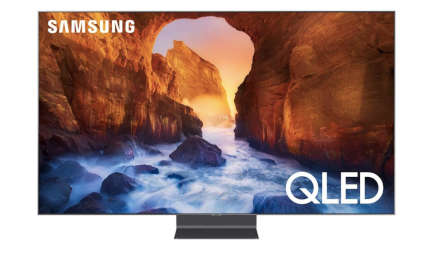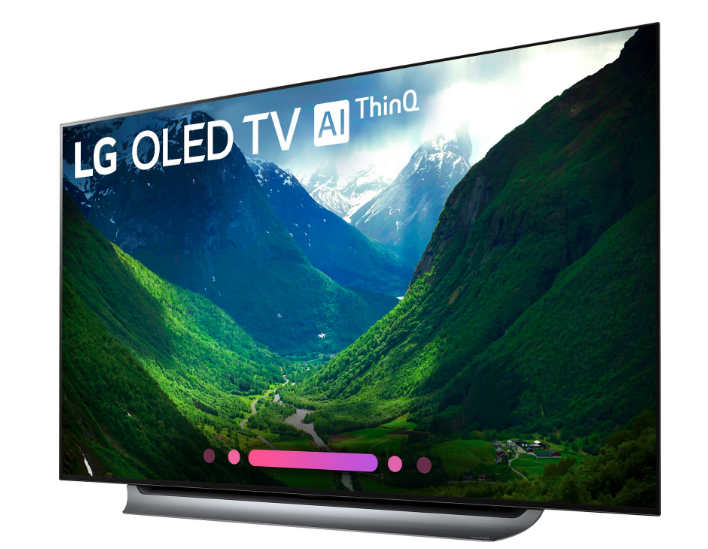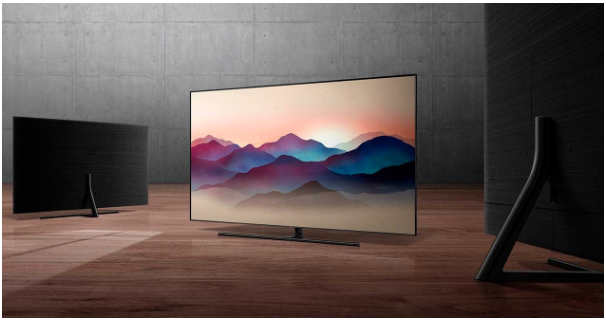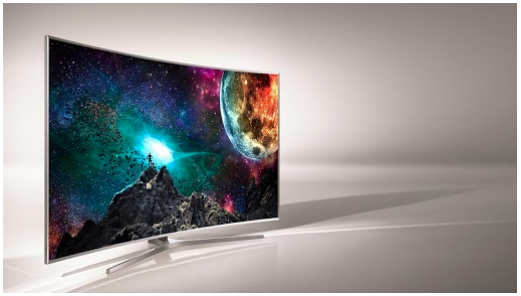Table of Contents
If you're shopping for 4K TVs in the more advanced market, you might come across two terms that sound similar: QLED and OLED. Put simply, these are TV technologies that use different techniques to create the best picture fidelity you can find in a consumer product. If you remember the battle between LCD and Plasma, it would be similar to the current relationship between QLED and OLED. The difference is that they can work in harmony, not compete in a way that suppresses each other. Join us to explore the differences of OLED and QLED TV.
Although these two concepts share the same three letters, don't be mistaken. QLED and OLED are very different technologies, each with their own strengths and weaknesses. Both apply to some of the best TV products on the market.
What is QLED?
QLED stands for Quantum Light-Emitting Diode. That means the QLED TV is like a regular LED TV, except that it uses quantum dots embedded in the LCD panel - these tiny nanoparticles significantly improve color and brightness when compared with non-quantum LED. Some LED TVs have handy LED backlighting, even some options have thousands of lights. The article will explain why there are many better LEDs in the following section.

QLED stands for Quantum Light-Emitting Diode
It is an intelligent system, but it relies on a combination of dimming the LED backlight and using the shutter to block the rest of the light, creating a true black color.
What is OLED?
OLED stands for Organic Light-Emitting Diode. Surprisingly, the "Light Emitting-Diode" part of the name has nothing to do with LED backlighting, as with QLED TVs and LEDs. Instead, it refers to the fact that every pixel in an OLED TV is also a tiny LED, extremely thin and can produce both light and color in a single element. In other words, an OLED TV doesn't need a backlight because each pixel creates its own light.

OLED stands for Organic Light-Emitting Diode
There are several advantages to this design, but most agree that when used in TVs, the biggest advantage is that great black levels can be achieved. Unlike QLED TVs or LEDs that dim the backlight and block the remaining light for dark scenes, the OLED TV only needs to turn off the pixels. When the pixel is turned off, it emits no light and no color, making it as dark as when the TV is turned off. It's also much easier to create a flexible OLED screen, which is why LG has pioneered it.
Compare QLED and OLED
Now that you know what all the letters in these two concepts represent and what they mean for display technology, compare QLED with OLED based on the most important categories when buying a Smart TVs: Brightness, contrast, viewing angles and other noticeable performance considerations, such as response time and longevity. These are all important factors when you spend up to $ 6.000 to own a top TV.
Black levels and contrast
Contrast is the difference between the darkest and the brightest parts of an image. If a TV can bring out the true black part, it doesn't have to make the other parts light up to achieve a good level of contrast. That's why, when it comes to black levels, OLEDs become the undisputed champion - thanks to the ability to turn completely black when needed.

QLED TV is forced to dim the LED backlight and block the rest of the light
In contrast, the QLED TV is forced to dim the LED backlight and block the rest of the light, which is difficult to perform perfectly.
It may cause a "light leak". This is the phenomenon when light floods the black part of the screen.
Brightness
QLED TVs have a significant advantage when it comes to brightness. Because they use separate backlighting (instead of relying on each pixel to create their own light), this LED backlight can be made extremely bright. Adding the ability of quantum dots to maximize that light by creating brighter colors in the color spectrum without losing saturation, you've got a screen that's bright enough to see clearly, even in the brightest rooms.
OLED panels cannot compete on the basis of pure brightness. Their individual glowing pixels simply cannot produce the same amount of light. In a dark room, this is practically not the case. Remember that QLED TVs need to be brighter to provide similar contrast between dark and bright areas - but in bright environments, or where there is more sunlight through the window, QLED TVs show up more clearly - especially if you are playing HDR content in these conditions.
Color space
OLEDs used to be unrivaled in this regard, but the use of quantum dots in QLED TVs has made for better accuracy, brightness and color volume. Samsung claims that the wider range of well-saturated colors at extremely high brightness levels is an advantage.

QLED and OLED are mixed in this regard
While there's no denying the fact that QLED TVs deliver great colors, users still see better-saturated colors at high brightness levels that offer a real advantage in normal viewing situations - due to So at the moment, QLED and OLED are mixed in this regard, because colors are subjective. There is a need to consider some tangible evidence in order to declare QLED as the superior option.
Response time, input delay, and refresh rate
Response time refers to the time it takes for a pixel to move from one state to another. The faster the response time, the sharper the image, especially in fast action scenes. Although it is difficult for the naked eye to discern the difference in response time, the standard OLED TV measurements are much faster than QLED TVs.
The response time on the QLED typically ranges from 2 to 8 milliseconds, which sounds pretty good until you realize that the response time of an OLED is only about 0.1 milliseconds.
On the other hand, input lag refers to the delay between performing an action (assuming a button is pressed on the gaming controller) and viewing the result of that action on the screen. As such, input lag is really only a concern for gamers - it has no outstanding effect on passive content viewing. In addition, the level of input lag you encounter is less related to the display technology, but due to the image processing taking place on the TV at the back of the decision. Both QLED and OLED TVs can achieve very low input lag, if you turn off all of the additional video processing features or simply use Game Mode of the TV.
Both technologies are impressive in their own way, but the article needs to pick out the more superior option, and for now, it's OLED. With a better representation of the factors most people will pay attention to when watching TV shows and movies, OLED has the best picture quality you can buy. On the contrary, QLED can also give you the best image and quality. Hope that the above sharing will help you a lot.
Daniel
ContributorT: @ManualsFile
https://ManualsFile.com
Mon - Sun 09:30 am - 05:30 pm